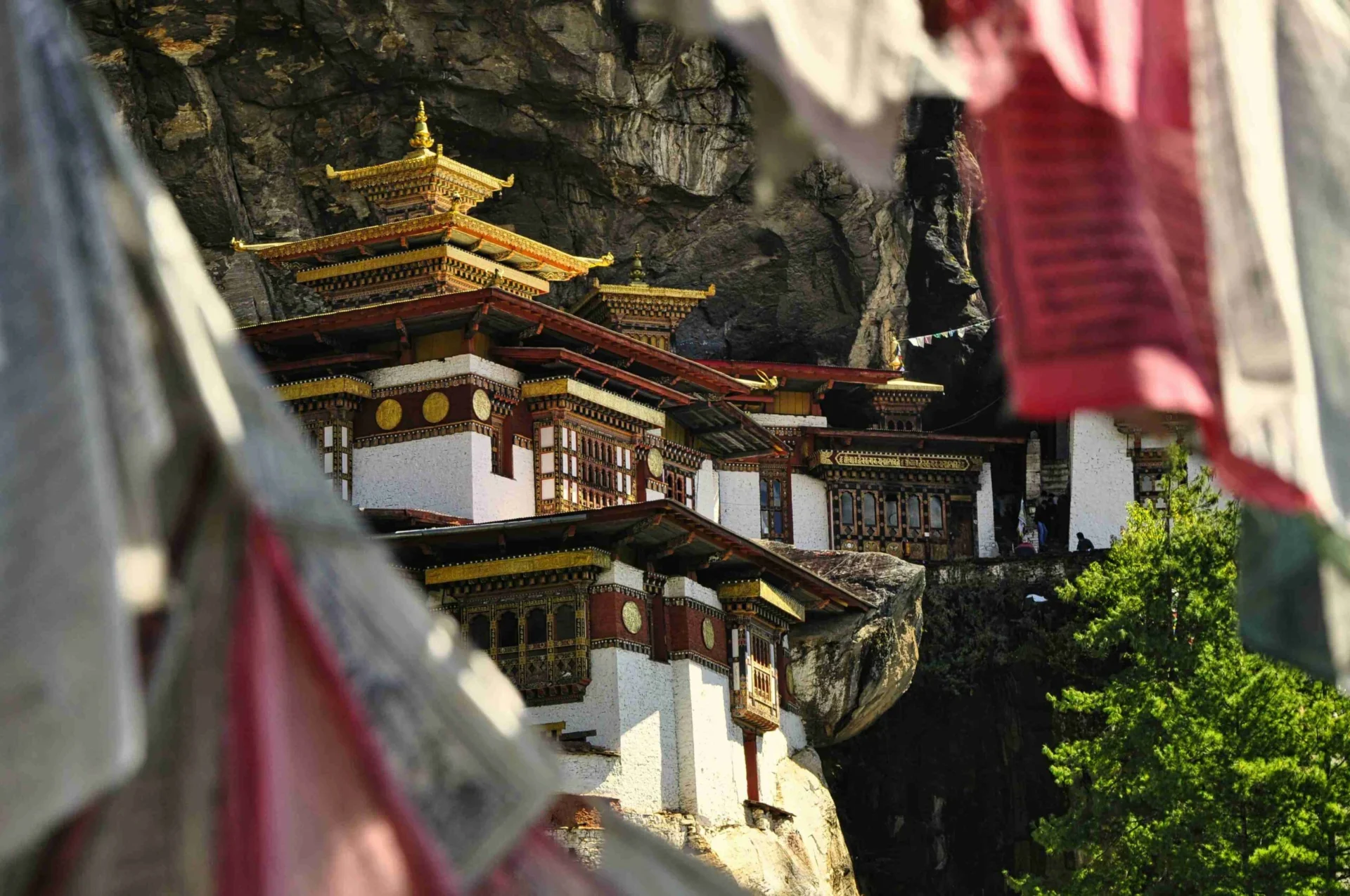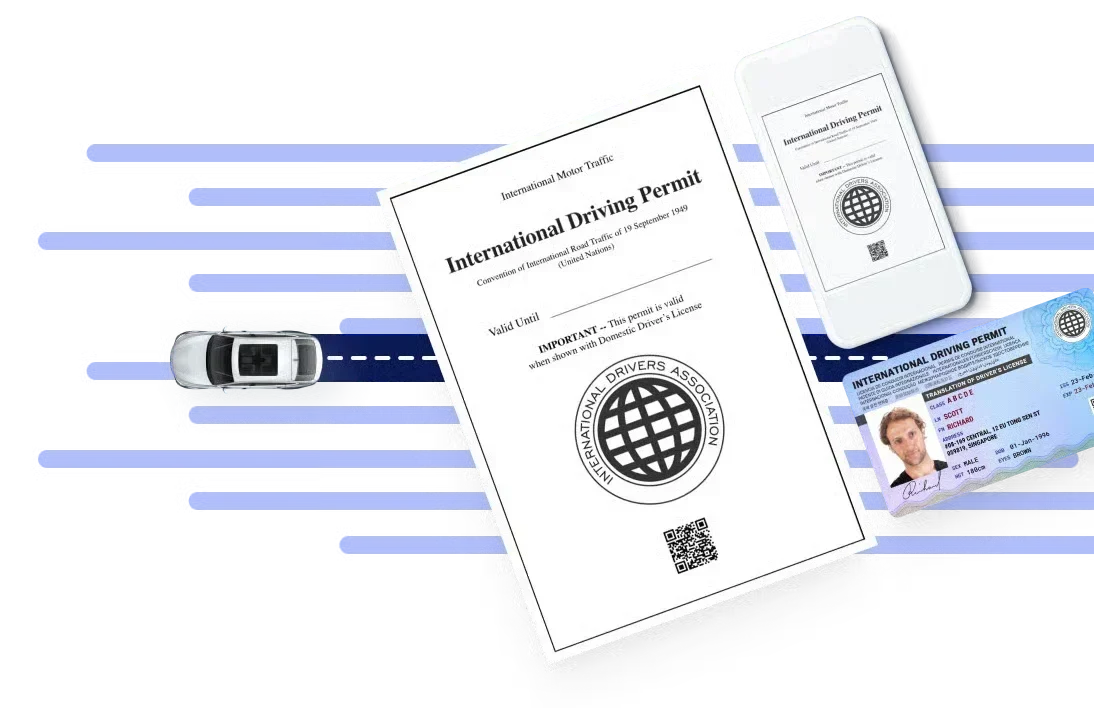

Where was your license issued?
Destination
The relationship between India and Bhutan can best be described as a strong friendship. They share a deep cultural and historical connection as neighboring countries, with many Bhutanese speaking Hindi and enjoying Indian cinema, particularly Bollywood films.
One of the unique aspects of this friendship is that Indian nationals do not require a visa to enter Bhutan. For Indians seeking a peaceful retreat or a spiritual journey, Bhutan is an ideal destination. However, despite the ease of access, some preparation is necessary before your trip.
Keep reading our guide to familiarize yourself with entry requirements, fees, and other important details for a smoother travel experience in the “Land of the Thunder Dragon.”
Do Indian Tourists Need a Visa to Visit Bhutan?
Indian tourists enjoy a unique privilege when visiting Bhutan: they do not require a visa. This exemption reflects the close diplomatic and cultural ties between India and Bhutan. Instead of a visa, Indian nationals must obtain an Entry Permit , an alternative that allows them to enter the country.
Entry Permit Requirements
To obtain the Entry Permit, Indian travelers need to present certain documents at the point of entry, either at the Paro International Airport or at the border town of Phuentsholing. The required documents include:
- Valid Identification: A passport with a minimum validity of six months or a Voter ID card issued by the Election Commission of India.
- Application Form: A duly filled Entry Permit application form.
- Photographs: Two standard-sized passport photographs.
- Hotel Booking: A confirmed hotel booking voucher in Bhutan.
- Tour Guide Details: Information about the certified local tour guide who will accompany them.
The Entry Permit allows Indian tourists to visit specific areas such as Thimphu and Paro. If travelers wish to explore other regions, they must apply for a Route Permit at the Immigration Office in Thimphu, which is necessary for traveling beyond these districts.
Sustainable Development Fees (SDF)
While Indian tourists do not need a visa, they must pay a Sustainable Development Fee (SDF) during their visit. This fee aims to promote sustainable tourism in Bhutan and preserve its natural and cultural heritage. The SDF is set at ₹1,200 or BTN 1,920 per person per night for Indian tourists.
However, here are some exemptions:
- Children aged 5 years and below are exempt from this fee.
- Children between 6 and 12 years old receive a 50% concession on the SDF.
Tourists visiting towns such as Samtse, Phuentsholing, Gelephu, and Samdrup Jongkhar for less than 24 hours are also exempt from paying the SDF.
Visiting Bhutan from India
Indian nationals have multiple convenient options for accessing Bhutan, whether by air, train, bus, or road.
Flights to Bhutan: Paro International Airport
The most efficient way to reach Bhutan is by air, arriving at Paro International Airport, located approximately 6 kilometers from Paro town. Druk Air and Bhutan Airlines are the primary carriers providing direct flights from several Indian cities, including New Delhi, Kolkata, Bagdogra, and Guwahati.
Flights are limited, so booking tickets in advance through airline websites or local travel agencies is advisable to ensure availability and flexibility with changes or refunds.
Get to Bhutan By Train
While there are no train services within Bhutan, Indian tourists can take advantage of the extensive railway network in India to get close to the border.
The nearest railway stations to the Bhutanese border are:
- Hasimara Railway Station (20 kilometers from Phuentsholing) – Approximately a 40-minute drive.
- New Jalpaiguri Railway Station (152 kilometers away) – About a 5-hour drive.
Travelers can board trains like the Kanchan Kanya Express or Rajdhani Express from major cities like Kolkata or New Delhi to reach these stations. After arriving at the station, they can hire taxis or buses to reach Phuentsholing, the main entry point into Bhutan.
Reach Bhutan By Road
Traveling overland is another popular option, especially for those starting from Kolkata or nearby areas. The Royal Government of Bhutan operates daily buses from Kolkata to Phuentsholing. The journey takes about 18 hours and departs from Esplanade Station in Kolkata.
Indian nationals can drive their vehicles into Bhutan, but they must pay a fee of Nu 4,500 or INR 7,200 per day at the port of entry. Additionally, it’s necessary to register their vehicles with the Check Post Management System of the Royal Bhutan Police (RBP). Travelers must ensure they have all the required documents, including vehicle registration, insurance papers, and a valid driver’s license.
When is the Best Time to Visit Bhutan?
If you want to experience Bhutan at its best, planning a visit during spring (March to May) or autumn (September to November) is highly recommended. The best time to visit Bhutan is from September to June, when the weather features clear skies and views of the Himalayas.
Can Indian Nationals Travel Independently without a Guide?
Foreign tourists, including Indian nationals, must travel in Bhutan with a licensed tour operator. This policy is part of Bhutan’s approach to sustainable tourism, which aims to preserve the country’s culture and environment while ensuring visitors have a structured and enriching experience.
Exploring Bhutan: How to Get Around
With its mountainous terrain and picturesque valleys, getting around Bhutan can be both an adventure and a challenge. However, there’s no need to worry; you have several transportation options for exploring Bhutan:
Check if you need an IDP NowWhere was your license issued?
Destination
Private Car Rentals
Indian tourists can rent cars upon arrival in Bhutan. However, it’s essential to note that self-drive options are unavailable; all rentals come with a driver.
If you have an International Driving Permit (IDP) , it can be useful for driving in other countries that allow self-driving. However, it does not grant you the right to drive in Bhutan without following local regulations.
Alternative Option: Driving within Bhutan
While self-driving is not permitted for foreign tourists, Indian nationals can bring their vehicles into Bhutan. However, they must register their vehicles and pay a fee of Nu 4,500 per day at the port of entry.
Taxis
Taxis are readily available in major towns like Thimphu, Paro, and Punakha. They can be hired for local sightseeing or intercity travel. However, unlike other countries where ride-hailing apps like Uber or Ola operate, Bhutan relies on traditional taxi services. It’s recommended that you negotiate fares before starting your journey.
Public Buses
Public buses are an option for budget travelers, although they may not be as comfortable or convenient as private transport. Buses connect major towns but may have limited schedules and routes.
Where to Stay: Hotels in Bhutan
Bhutan offers a range of options, from luxurious resorts to charming homestays. You can find world-class luxury hotels with exceptional service and stunning views in popular areas such as Paro, Thimphu, Punakha, and Bumthang. Notable properties include Amankora, Gangtey Lodge, and Le Méridien Thimphu.
If you’re seeking more affordable yet comfortable options, mid-range hotels like Hotel Druk Thimphu and Khang Residency provide cozy accommodations without compromising quality.
Must-Visit Places in Bhutan
Bhutan’s monasteries are often at the top of visitors’ lists. However, there are also numerous other natural and cultural attractions worth exploring across the major regions and key cities of Bhutan:
Paro Valley
Paro is home to some of Bhutan’s most iconic landmarks, including the famous Tiger’s Nest Monastery (Taktsang), perched precariously on a cliffside. The hike to the monastery provides stunning views of the Paro Valley and surrounding mountains.
Thimphu
As the capital city, Thimphu is a vibrant hub of culture and tradition. Key attractions include the Tashichho Dzong, which houses the throne room and government offices, and the Buddha Dordenma, a massive statue overlooking the city.
Punakha
Punakha was once the capital of Bhutan and is known for its Punakha Dzong, situated at the confluence of two rivers—the Pho Chhu and Mo Chhu. This dzong is considered one of the most beautiful in Bhutan.
Bumthang Valley
Bumthang Valley is also home to ancient temples and monasteries. Key sites include Jakar Dzong, which overlooks the valley.
Essential Things to do in Bhutan: Beyond Visiting Monasteries
In addition to visiting these remarkable places, there are several activities and experiences that every traveler should consider during their trip to Bhutan:
- Trekking: Bhutan offers some of the most scenic trekking routes in the world, such as Druk Path Trek and Jomolhari Trek.
- Attend Local Festivals: Major festivals include Paro Tsechu in spring and Thimphu Tsechu, which is celebrated in autumn.
- Visit Traditional Crafts Workshops: Explore places like the Royal Textile Academy of Bhutan, where you can learn about traditional weaving techniques. You can also visit local markets for handmade crafts and textiles.
- Experience Traditional Cuisine: Bhutanese food is flavorful and unique, often featuring ingredients like chili peppers (used liberally) and cheese. Must-try dishes include Ema Datshi and Phaksha Paa.
- Engage in Spiritual Practices: Participate in guided meditation sessions at monasteries like Tango Buddhist Institute or Cheri Monastery. You can also learn about Buddhism through interactions with monks or by attending teachings at local temples.
If you’ve coordinated with your tour guide about these activities, pack comfortable clothing for trekking and sightseeing, warm layers for cooler evenings, sturdy shoes, and any personal medications you may need. Lastly, bring your camera to capture the breathtaking landscapes that Bhutan has to offer.
FAQs
What are the requirements for Indian tourists traveling to Bhutan?Indian tourists are not required to apply for a visa to enter Bhutan. However, they must carry a valid passport or a voter ID card and obtain an entry permit at the border.
How can I travel to Bhutan from India?You can travel to Bhutan by air or road. Druk Air and Bhutan Airlines offer direct flights from major Indian cities like Delhi and Kolkata to Paro. Alternatively, you can drive to the border town of Phuntsholing and enter Bhutan by land.
What currency is used in Bhutan, and can I use Indian currency?In Bhutan, the currency used is Ngultrum (BTN). Fortunately, Indian Rupees (INR) are widely accepted. It’s advisable to carry some local currency for smaller purchases.
How much does a trip to Bhutan cost for Indian tourists?The cost of a trip to Bhutan will depend on your itinerary and accommodations, but a typical package tour ranges from ₹23,500 to ₹41,000 (approximately $278.48 to $486.85) per person for a 10-day trip.
What are the must-visit places in Bhutan?Key attractions include:
- Tiger’s Nest Monastery (Paro Taktsang)
- Punakha Dzong
- Thimphu (the capital city)
- Dochula Pass
- Gangtey Phobjikha Valley






